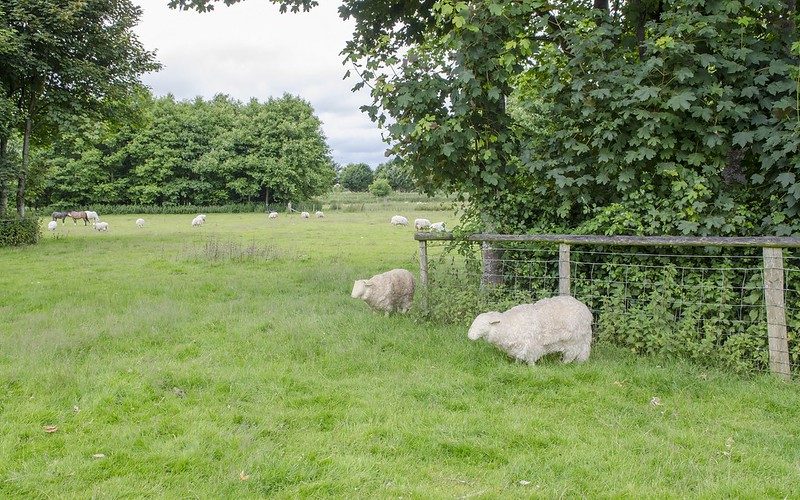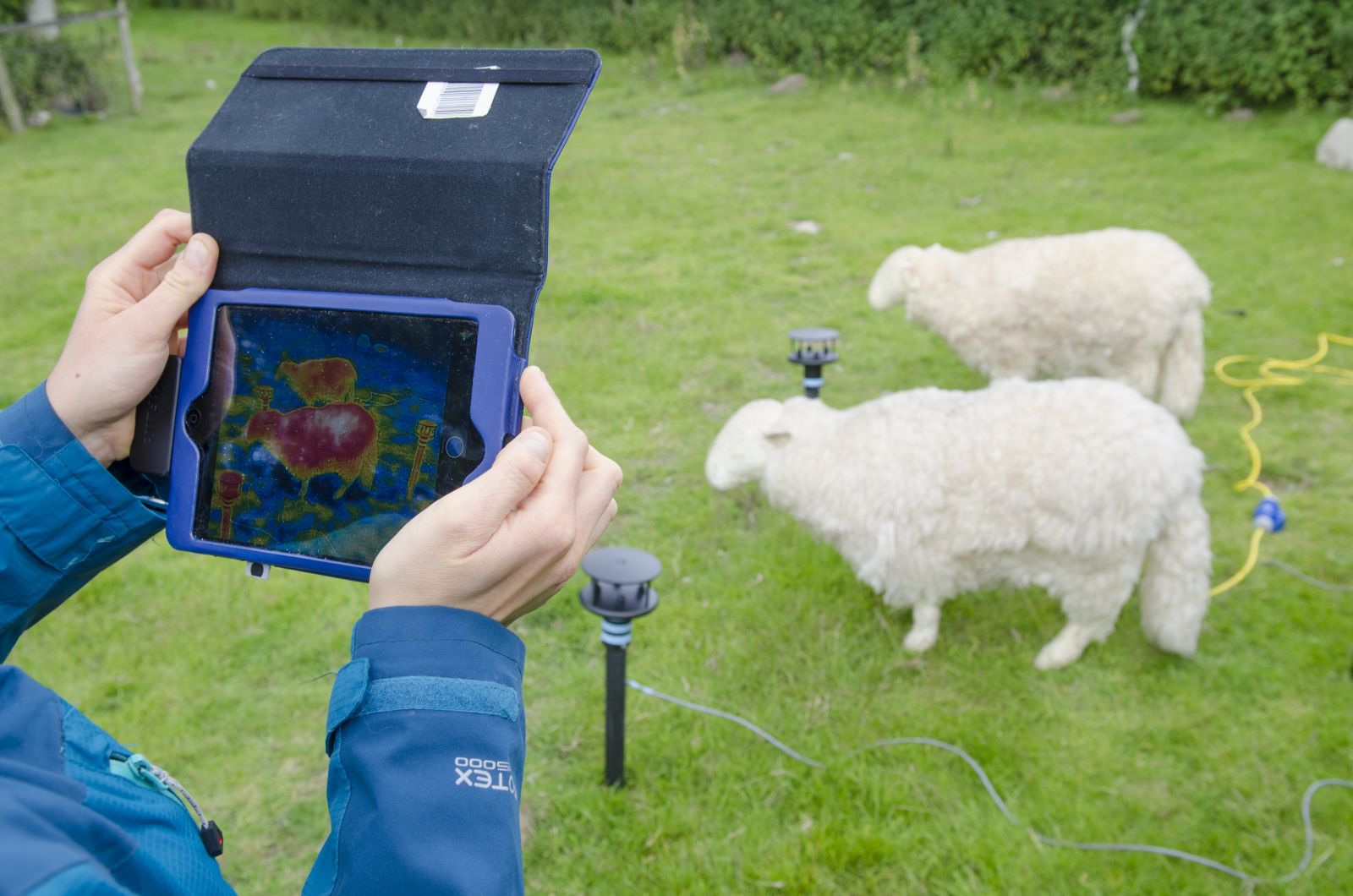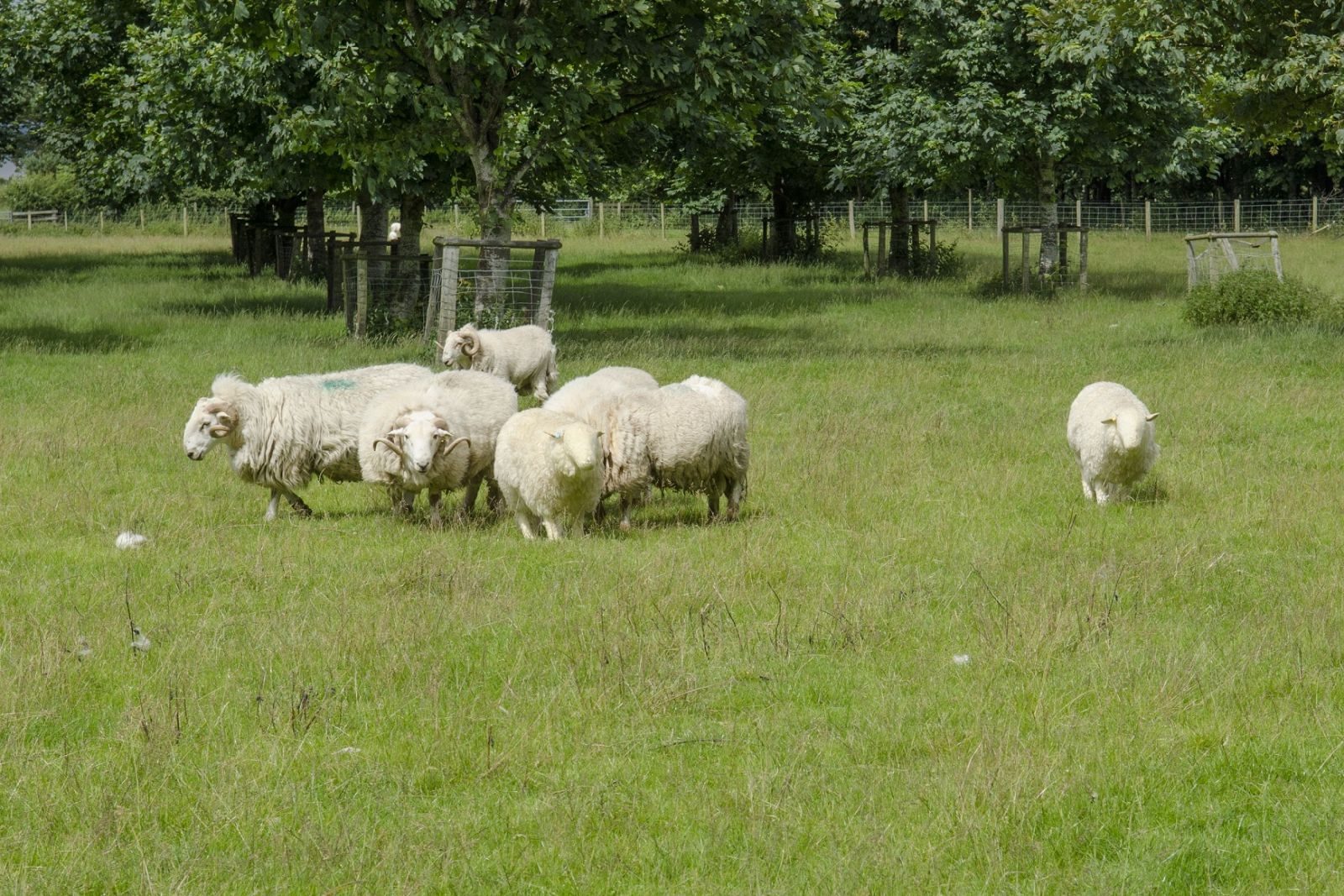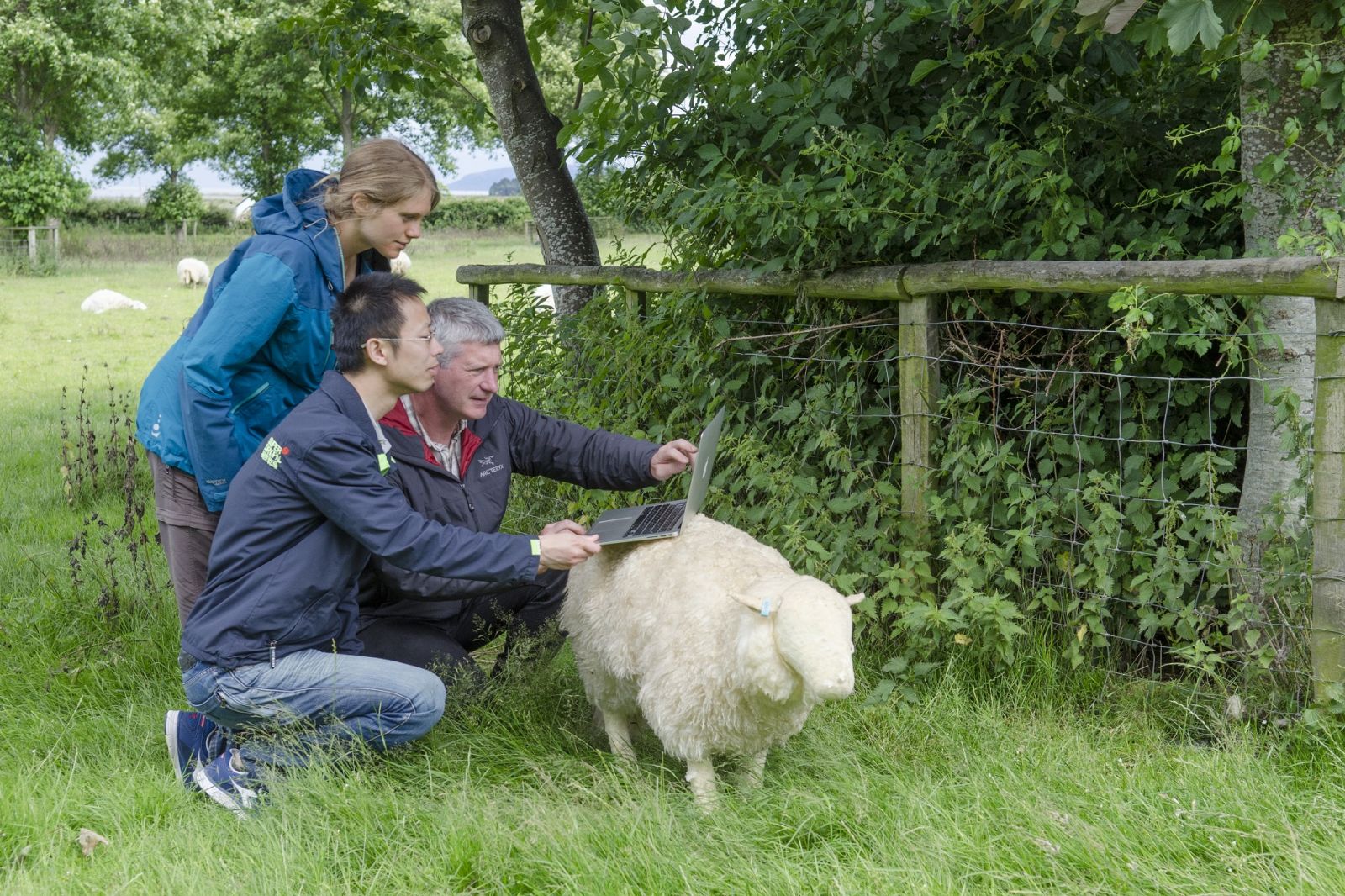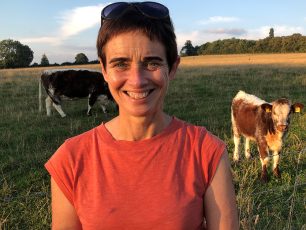How can two sheep shape the future of your farm?
Picture a sheep…
Bleating. Grazing. Chewing the cud. Following the crowd. Possibly lying on its back as sheep are wont to do.
All typical sheep behaviour. But in a field in Wales there are two ewes who don’t exhibit any such behaviour. They stand silent, motionless, in all weathers, not batting an eyelid, even when approached by a rampant ram – which happens quite often.
The reason they don’t bat an eyelid is because they don’t have them. Or eyes. There’s other bits they’re lacking too, like a heart, lungs, intestines – basically all the inside bits.
But there’s no need for alarm. They are, in fact, robots.
As part of a study partially funded by the Woodland Trust, scientists at Bangor University have created the model sheep and fitted them with sophisticated electronics that measure the energy it takes to maintain their body temperature in different conditions.
Sophisticated electronics inside the sheep measure the energy it takes to maintain their body temperature in different conditions
Lift up their tails, jam your hand in areas you wouldn’t normally want to, and out comes a plethora of gizmos and gadgets. It’s very impressive.
But what have Melyn and Glas – yes, they have names – got to do with the Woodland Trust?
Measuring the impact of trees…
Sheep, robotic or otherwise, love trees. Well-designed tree shelter has been shown to give a 10% improvement in live weight gains, and reduce lamb mortality by 30%.
Blending in – The electric sheep are integrated into the flock at Bangor University’s demonstration farm
The research at Bangor builds on this and sees PhD student Pip Jones recording the energy consumption of the sheep as she moves them around the fields at the university’s farm; comparing what happens in places where trees, hedgerows or shelterbelts offer protection in locations where there’s no shelter.
By measuring the power consumed by the robotic sheep to maintain their internal temperature in different conditions, researchers can work out how much energy the sheep loses just trying to deal with the weather. If sheep can maintain a comfortable temperature through the use of shelterbelts, then more of their energy can be allocated to production.
Bangor University team – Dr Andy Smith, Senior Lecturer in forestry at Bangor University with PhD students Pip Jones (left) and Yufeng He get ready to analyse the latest data.
So far the team has worked out that over the three months of winter, if it averaged a chilly 6°C outside, this would increase the energy deficit by nearly 0.25 megajoules per sheep, per day. This means that 100 sheep would need an extra 189 kg of dry matter silage, just to produce the energy they need to keep warm, energy that is therefore not available for growth.
What does it mean for farmers?
Trees and hedgerows can therefore keep farmers’ costs down.
Another simulation examined the risk of thermal stress in livestock in an upland field and revealed the probability of animals experiencing potentially fatal wind chill fell by more than 20% if they had shelter.
I love that trees provide so many benefits to flock health. As well as reducing the risk of hypothermia in new born lambs, they also cut the risk of mastitis in their mothers.
Cold, exposed and windy conditions can lead to an increased risk of ewes developing acute mastitis, which reduces the ability of the ewe to support her lambs, increasing the likelihood of lamb mortality or poor growth rates.
Shelterbelts can also be designed to assist natural behaviours of ewes and provide opportunities for isolation during lambing. Isolation increases the chances of early development of a strong bond between the ewe and her lambs, better suckling and colostrum intake, reduced disease risk, and greater resistance to the cold. They also improve soil quality by increasing water infiltration rates, which in turn reduces waterlogged ground conditions associated with causing lameness and liver fluke.
Last year I was reading the findings of another of our funded research studies. Harper Adams student Rachel Glover interviewed a number of sheep farmers as part of her Masters degree. In her study‘Trees for shelter and other functional benefits in sheep and beef farming systems: An evaluation of the operational experiences and economic effects on a sample of farms in England and Wales,‘ one farmer was quoted as saying that he had seen a noticeable reduction in fluke since planting some wet areas with trees over the last few years.
He’s typical of the many farmers now realising the benefits of planting trees on their farms. Whereas before they’ve been deterred from planting because of the loss of their Basic Farm Payment if they have the audacity to plant more than 100 trees per hectare, they now see that the benefits to their farm productivity far outweighs that loss. They see that trees are not an inconvenience and are coming to rely on them as working partners, improving soil and water quality, reducing erosion, and providing a really valuable source of income in the form of a crop, whether that’s woodfuel or a field full of fruit.
Agroforestry 2017
Agroforestry is becoming a really attractive proposition and I’m looking forward to our first agroforestry conference which takes place at Cranfield University on June 22nd. The Woodland Trust has joined forces with the Soil Association and Royal Forestry Society to create an inspiring and practical day exploring how profits and productivity can be increased with trees.
Melyn and Glas will be there – along with their shepherdess Pip and a number of farmers with hands on experience of making trees work for them. Come and join us. We’ll be delighted to see you.
Find out more and book tickets here.
Helen Chesshire is the Woodland Trust’s senior advisor for farming. She writes:
“As an animal mad young girl living on a livestock farm in the Midlands I had dreams of becoming a shepherdess on a Welsh mountain. After surviving the exploits of my local agricultural college and travelling around New Zealand and Australia – the standard route for farmers’ daughters – I decided to extend my education and undertook a degree in Agricultural Business Management at Wye College. But the dreams of becoming a shepherdess took a back seat/major detour when I met my future husband, a medical doctor, and spent a year in South Africa undertaking volunteer work. Back in the UK I was committed to working for a charity and wanting to combine this with my love of the countryside joined the Woodland Trust. I am now the Trust’s senior adviser for farming, encouraging farmers to think of trees as a natural partner for their business. I am only at the beginning of my trees on farms journey but if I can continue to work with the growing band of pioneering and innovative farmers we currently partner with, then the future is rosy.”
Learn more:
- Bangor University’s research farm, Henfaes Research Centre, is profiled on Agricology! View it here.
Have a look at some of the other content hosted on Agricology that explores the beneficial effects of trees on sheep:
- ‘Shelter boosts lamb survival rate – planting trees to benefit sheep farming’ – When shelter is in short supply strategic tree planting makes a real difference. In this case study a Cumbrian farmer shares his experience.
- ‘The role of trees in sheep farming‘ – This practical guidance looks at the integration of trees in to sheep management systems and the benefits they can bring.
- ‘The Pontbren Project‘ – A report describing a collaborative approach to woodland management and tree planting to improve the efficiency of upland livestock farming.
- ‘Trees enhance flock health and field drainage’ – A Welsh farmer’s experience of how strategic on-farm tree planting has increased livestock shelter and improved land management.
(Editor’s Note)
Header image: Melyn and Glas – Trees and hedges provide valuable shelter – even for electric sheep. Photo credits: Laurence Clark/WTML and Liz Carney/WTML (Attribution-NonCommercial)
